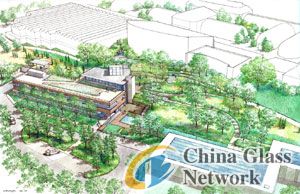Post Time:Apr 12,2012Classify:Company NewsView:449
PPG Industries (NYSE:PPG) announced that the Center for Sustainable Landscapes being constructed on the campus of Phipps Conservatory and Botanical Gardens in Pittsburgh will include SUNGATE(R) 500 STARPHIRE(R) glass and SOLARBAN(R) 60 Starphire glass by PPG. The two advanced architectural glasses were selected for characteristics that will help the center become one of the world’s first certified “living” buildings.
Richard Piancentini, Phipps executive director, said the center is designed to meet or exceed the stringent standards of the Living Building Challenge, an advocacy and certification program that encourages architects, designers, specifiers and building owners to achieve the highest possible standards of sustainable design. He said glass selection was critical to helping the center meet rigorous standards for energy use and human health and comfort.

“PPG glass was specified for the project because we wanted a low-e (low-emissivity), high-performing glass that provides state-of-the-art solar and thermal control and energy efficiency, while admitting maximum daylight,” Piancentini said.
Chris Minnerly, AIA, LEED AP, principal of The Design Alliance Architects, who specified the glass, concurred. “One of the key aspects of glass selection is to balance the solar heat gain coefficient against the visible light transmittance to get the best overall performance,” he said. “The glass assemblies have to have the best UV transmission in certain light spectrums to facilitate the growth of plants.”
Minnerly specified two triple-pane insulating glass units (IGUs) to meet performance requirements in different parts of the building. Sungate 500 Starphire glass will be installed above the sunshade and light shelves, while Solarban 60 Starphire glass will be used below.
When combined with Starphire glass in the specified triple-pane IGU, Sungate 500 glass has visible light transmittance (VLT) of 63 percent and a solar heat gain coefficient (SHGC) of 0.51, which yields a light-to-solar gain (LSG) ratio of 1.24. Solarban 60 Starphire glass in the same configuration generates an LSG ratio of 1.90 based on VLT of 61 percent and a SHGC of 0.32. Winter nighttime U-values for both configurations are less than 0.20.
The Living Building Challenge was developed in 2005 by the Cascadia Region Green Building Council and requires buildings to generate all of their own energy with renewable resources, to capture and treat all of their water on-site and to use resources efficiently and for maximum beauty. The certification program, which is now administered by the International Future Living Institute, measures a building’s performance in seven areas, including site, water, energy, health, materials, equity and beauty. So far, only three projects have achieved “living” status by meeting all 20 imperatives established by the Living Building Challenge.
Source: www.ppg.comAuthor: shangyi